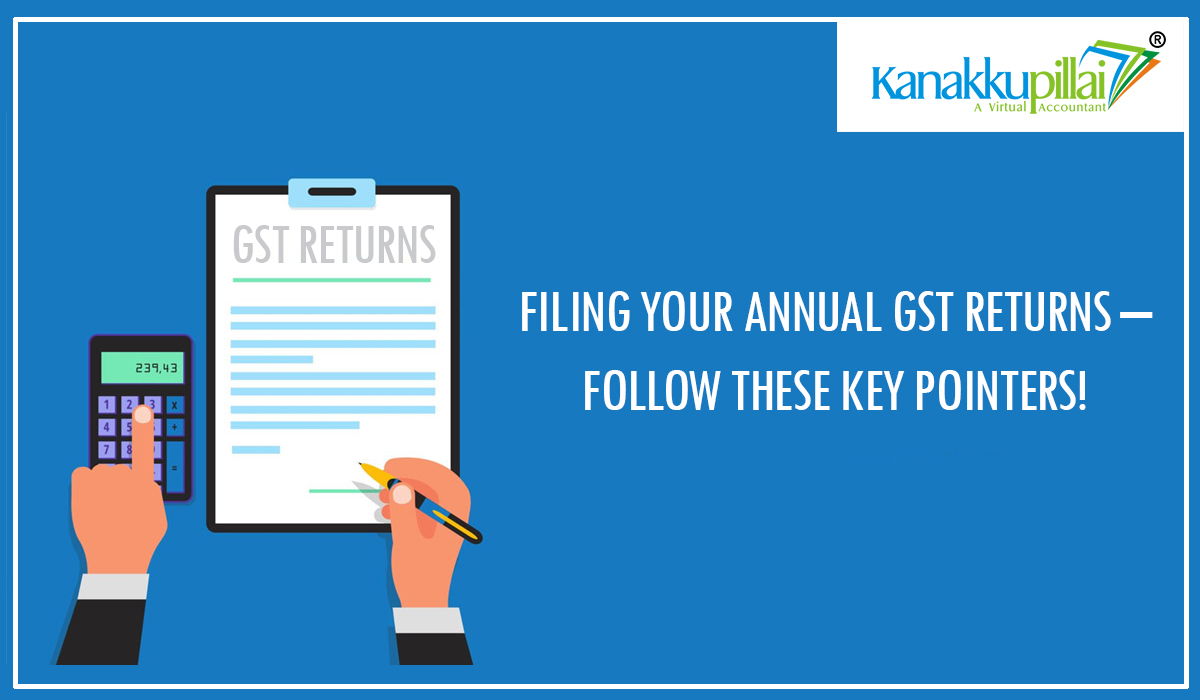Goods and Services Tax is changing the face of the indirect tax in India. Each registered taxpayer in the GST ought to be a transparent party by ensuring that regular returns are made. Annual GST Return Filing is a special feature among them. It performs the role of consolidating all the monthly or quarterly returns that have been filed throughout the financial year and provides the government with a full picture of tax compliance.
This blog explains about what annual GST return means, what persons should file it, how to file it online and why it is important to ensure businesses stay on track of being compliant.
What is Annual GST Return?
Annual GST Return is a comprehensively prepared return, and it is mandatory for every GST-registered taxpayer (with some specified exemptions) to file a single such Annual GST Return once in every financial year. It contains the information about outward supplies, inward supplies, tax paid, input tax credit utilised, etc.
It provides a summary of all the different transactions that were conducted within the year and assists the revenue authorities in determining the accuracy of the tax returns. Annual returns are required based on Section 44 of the CGST Act; failure to do so attracts fines.
Types of Annual GST Returns
Depending on the nature of the taxpayer, there are various types of annual GST returns:
- GSTR-9 is a normal annual return that is filed by ordinary taxpayers filing GSTR-1 and GSTR-3B.
- GSTR-9A could be used by the holders of the composition scheme, but it has been suspended in recent years.
- GSTR-9C is a reconciliation statement and audit form to be filed by those taxpayers whose annual turnover is more than 5 crores.
- GSTR-9B is applicable to the operators in e-commerce, but it has not been notified yet, which means that it can be filed practically.
Who Needs to File Annual GST Returns?
All GST-registered persons with a current GSTIN are mandated to file an Annual GST Return in the current financial year. This includes:
- GST-registered regular dealers and Taxpayers
- Entities with multiple GST registrations across states
- Under GST, E-commerce sellers
- Companies that interstate supplies
- VAT-registered enterprises seeking an input tax credit or with reverse charge transactions
However, the following categories are exempt from annual return filing:
- Casual taxable individuals
- Non-residents who are taxable persons
- Input service distributors (ISD)
- The taxpayers registered under the composition scheme (filing of GSTR-9A got waived off in recent years)
Importance of Filing GST Annual Return
Submission of GST Annual Return is not only prescribed under the law but also maintains the finances in line and makes your compliance record strong. The return serves as a self-checking mechanism for determining mismatches, errors or omissions on the monthly or quarterly returns. It also enables the taxpayers to reconcile their information and adjust any controversy before they are reconciled by the authorities.
Full, correct and on-time annual GST filing will prevent notices, penalties and audits. It also helps in sustaining a good relationship with tax authorities and the establishment of credibility in forthcoming financing, tenders, or business expansions.
How to File Annual GST Return Online?
The traditional GST annual return is simple through GST portal (www.gst.gov.in). This is how it can be done in steps:
- Go to the GST portal and enter your login details.
- Go to the returns dashboard, then click on the financial year.
- Choose the right form of annual returns (GSTR-9 or GSTR-9C).
- Add information reflected in outward supplies, inward supplies, input tax credit, tax paid and any refunds input.
- Reconcile and refer to the auto-generated data of GSTR-1 and GSTR-3B.
- Confirm the return by checking it with a Digital Signature Certificate (DSC) or Electronic Verification Code (EVC).
- File the return and print an acknowledgement as a way of keeping the records.
If your turnover exceeds 5 crores in a year, then you will be required to file GSTR-9C, which comprises audited financial accounts, as well as a reconciliation statement verified by a Chartered Accountant.
Factors to Avoid Mistakes
- Entering incorrect turnover figures or tax liability
- Conflict in the books of accounts and returns filed
- Failure to report reversal of ITC or ineligible input tax credits
- Not filing GSTR-9C as/when it is necessary
- Failing to meet the deadline and huge late charges
These can be avoided by taxpayers by reconciling their accounting books and data validation tool, and consulting tax experts.
Conclusion
Online filing of annual GST return not only means compliance, but it also shows that your business is honest and financially disciplined. It helps reveal discrepancies, makes others transparent, and helps in maintaining your business’s GST compliance. As the government is now stricter regarding tax defaults and mismatches, it is essential that every registered Indian business file its annual returns on time. To be on the right side of the law, ensure that your data is accurate, reconciled and filed before the new deadline.





